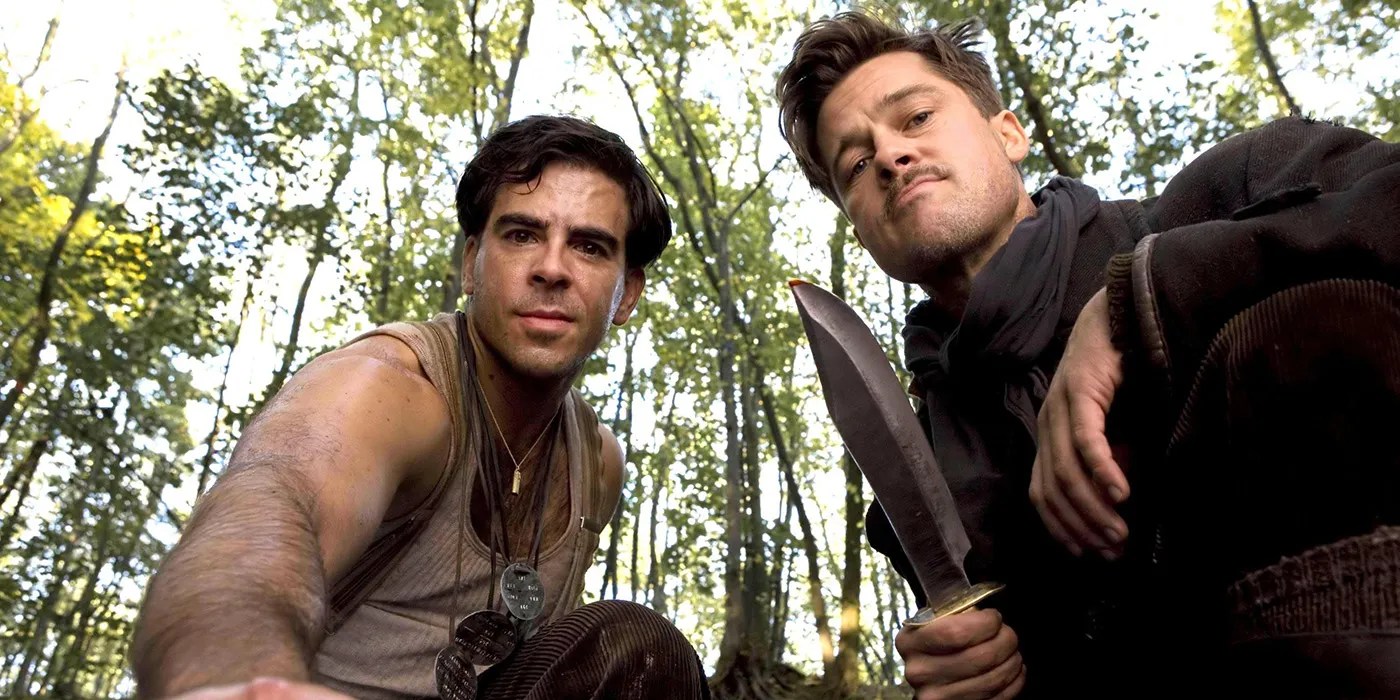As the quintessential modern auteur director, to date Quentin Tarantino has made nine films. He has gone on to reinforce the idea that his tenth would be his final. Considering this, the bulk of his work has already been viewed by his greatest fans. This will be the toughest debate for film enthusiasts forever and ever, but, of the nine he has released thus farnone are as skilled, as highly conceived, nor as memorable asInglorious Basterds.
It can be agreeably argued thatOnce Upon a Time in Hollywoodis the culmination of Tarantino’s life’s work, and so it is a close second toInglorious Basterds. However,Basterdsis unlike anything else he has ever made and for many other reasons should be lauded as the finest film of Tarantino’s film career.

RELATED:The Script For Avatar 5 Made Stephen Lang Tear Up
Inglorious Basterdsstruck theatres in 2009 and made a Tarantino record of 321.5 million dollars (subsequently beaten byOnce Upon a Time inHollywoodand his current top performerDjango Unchained). Prior to this point, Tarantino was bestknown for making contemporary action-crime flickslikeReservoir DogsorPulp Fiction, or pastiche genre pieces likeKill BillorDeath Proof.Basterdswas his first foray into historical fantasy and remains his best. Typical to a Tarantino movie,Basterds’roster is chock-full of notable high caliber actors and actresses like Brad Pitt, Diane Kruger, and an at-the-time relatively unknown Michael Fassbender. It also featured the American debut of Christoph Waltz. Again, typical of a Tarantino movie, its story is divided up into several asynchronous chapters closing in on a dramatic unforgettable climax.
Timeless Period Piece
By settingInglorious Basterdsin the Second World War Tarantino has established themovie in one of Hollywood’s most popularand exciting time periods. The Second World War is an era frozen in the cinematic memories of all audiences. If one were to watch his contemporary set films likeJackie BrownorPulp Fictionthe clothing styles or the lack of smart technology would age them poorly.
An equivalent experience would be like rewatching an early 21st-century spy thriller (TheBourne Identityfor example),and marveling at the old CRT computer monitors and flip phones. The Second World War provides this epic a visual quick hand. The Nazis areintuitively recognized as the big badevil guys. The Allies, both the Basterds and the British Commandos, are automatically the heroes (despite some of their more grotesque behaviors). More specifically, the plight and rage of the Jewish escapee, Shosanna Dreyfus, is even more dire and pronounced in context of the historical tragedies of the war. With a plot about the assassination of the entire Nazi High Command, what is there to protest against? The entire premise is easily internalized and celebrated by the audience.

Cavalcade of Characters
Within that, Tarantino introduces the audience to some of the most memorable characters of his film collection, and perhaps even all recent cinema. To name three, Brad Pitt’s Lt. Aldo “The Apache” Raine is abold and brutal squad leaderof what is essentially the Allied equivalent to the Nazi’s mobile killing squad. The Basterds are an ironic and comedic inversion of the Einsatzgruppen. Eli Roth boosts the Apache’s ranks as the baseball bat-wielding tough Donny “The Bear Jew” Donowitz.
Finally, the unforgettable and terrifying SS detective Hans Landa, notoriously known as “The Jew Hunter.” Hans Landa alone makesInglorious Basterdsthe definitive Tarantino viewing. He is more than a Nazi villain; he is the visible manifestation of a fox. He is clever, cunning, andvicious while remaining charismatic, sociable, and restrained. Waltz’s performance won an Oscar for Best Supporting Actor. It is mesmerizing and as unbelievable the first time to see as the last.
Immersion 101
If one were to watch Tarantino’s movies from first release to most recent, one would see the growth and development of a highly skilled and talented director. In the beginning, he was about action, rampant violence, and thoroughly expressive vocal characters. As his abilities grew,and likely as his budgets grew, he became more able to shoot richer and more stylized scenes. Compare the opening act ofInglorious Basterdsto anything he made prior and there is a clear and stark contrast of his control over the camera.
The landscape shot of the pastoral French countryside as Shoshanna runs for her life away from the taunting Hans Landa is unassailable. The closest he has come since to toping that scene is the driving sequence inOnce Upon a Time in Hollywoodand arguably the visit to Spahn Ranch in the same movie.Tarantino’s choice of music inBasterdsenhances the material as well. Typically, Tarantino uses a choice list of eclectic pop songs as soundtrack to his films. Here, he uses a rousing and evocative score (such as the opening orchestral “The Green Leaves of Summer”), even including a single modern piece by David Bowie.
One hopes Tarantino’sfinal film becomes his most celebratedand remembered. He is a master filmmaker who has provided the art of cinema with a distinct wave of awesome movies. Other than a potential case forOnce Upon a Time in Hollywood,Inglorious Basterdsis the finest movie Quentin Tarantino has ever made.